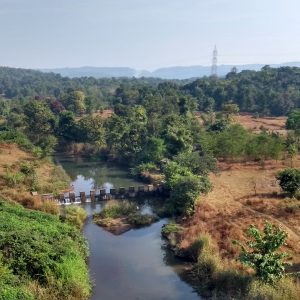Federal Water Tap, December 10: FERC Panel Finds Deficiencies in Dam Safety Reviews
The Rundown
After the Oroville spillway failure, FERC evaluates its inspection process. The Supreme Court asks the Trump administration to weigh in on groundwater and the Clean Water Act. The Army Corps explores private-sector partnerships. The Department of Homeland Security’s infrastructure council publishes a draft report on catastrophic power outages. A Coast Guard bill includes ballast water management rules and a Great Lakes oil spill research center. The FDA traces the latest E. coli outbreak from romaine lettuce to the central California coast. Congress has unfinished business: a budget and the farm bill. And lastly, the Trump administration is expected to propose a substantially less protective Waters of the United States rule on Tuesday.
“Now that Democrats will soon control one branch of Congress, President Trump is again signaling that infrastructure could be an area of compromise. We agree, but if the president wanted to earn Democratic support in the Senate, any infrastructure bill would have to include policies and funding that help transition our country to a clean-energy economy and mitigate the risks the United States already faces from climate change.” — Sen. Charles Schumer (D-NY) in an opinion piece published online by the Washington Post.
By the Numbers
1979: The last year that U.S. coal consumption was as low as it is forecast for 2018. (Energy Information Administration)
$1.2 billion: Grant and loan funding for 234 rural water projects. (U.S. Department of Agriculture)
News Briefs
Debate about Clean Water Act and Groundwater Reaches Supreme Court
The nation’s highest court wants Trump administration lawyers to weigh in — quickly — on a hot topic in environmental law: whether the Clean Water Act applies to pollutants that reach rivers, lakes, or the ocean via groundwater.
Federal appeals courts have offered contradictory conclusions. Two petitions are before the Supreme Court. One involves a pipeline rupture in South Carolina. The other: wastewater disposal in Hawaii. The common thread for both cases is the movement of pollutants via groundwater.
The court asked the solicitor general to file briefs by January 4, an “unusually expedited timeline,” write lawyers at Akin Gump Strauss Hauer & Feld. “This surprising action foreshadows the potential for an earlier-than-expected decision on an issue with deep ramifications for those in the energy industry,” they add.
The U.S. Environmental Protection Agency asked the public earlier this year whether it should clarify or amend its position. During the Obama administration, the agency affirmed its belief that such discharges ought to be regulated.
In context: Sixth Circuit Rulings Muddle Question of Clean Water Act Authority over Groundwater
Army Corps Explores Private Sector Deals
The Army Corps will hold two webinars this week to discuss a pilot program for private sector investment in federal infrastructure.
The goals of a public-private partnership, or P3 in the lingo, is to lower project cost and quicken construction. An Army Corps pilot program will select up to 10 projects to test the concept.
The webinars are scheduled for December 11 and 12 at 2:00 p.m. Eastern. Use this link to connect to the meeting.
In context: Federal Water Agency, In Course Correction, Courts Private Investment
Coast Guard Bill Directs Funds to Great Lakes
President Trump signed a Coast Guard reauthorization bill that also preserves rules to protect the Great Lakes from non-native species.
The water protection provisions address ballast water, which is what ships use for balance. Because ballast water moves with the ship, unwanted species can hitch a ride.
The bill authorizes $50 million a year for the next five years to monitor for non-native species in the Great Lakes.
The bill also authorizes a research center for responding to oil spills in the Great Lakes. In addition to research, the center will train local emergency responders on oil spill recovery techniques and strategies.
Studies and Reports
FERC Evaluates Dam Safety Program After Oroville Incident
Inspectors overlooked technical details during safety evaluations that could have identified structural problems with the Oroville Dam spillway before it failed in February 2017, according to an assessment ordered by the Federal Energy Regulatory Commission.
FERC assembled the six-person panel to assess the safety inspections that are required every five years for the roughly 2,500 hydropower facilities it regulates.
The panel looked specifically at the inspections at Oroville Dam, the tallest in the country. Its main complaint: that the reviews were “cursory,” not looking deeply into original design specifications or geological reports.
“Based on our review of the historical Part 12 report record, certain aspects of these reviews were treated as merely updates of existing information, rather than an independent checking of facts and a thorough review of available information and analyses.”
Part 12 is the five-year safety inspection requirement.
As for the spillway’s performance, the panel concluded that the failure was due in large part to faulty construction that did not follow initial designs. Erodible soil was left in place beneath the spillway, anchoring points were too shallow, and the concrete slab was too thin.
In November, the Government Accountability Office, a watchdog agency, criticized FERC’s dam safety program for being too narrow and not identifying similar problems across all the dams it oversees.
Country Not Ready for Catastrophic Power Outage
The United States is not prepared for a widespread, catastrophic power outage that lasts for weeks or months, according to a draft report from the Department of Homeland Security’s infrastructure advisory council.
“This profound threat requires a new national focus,” the report asserts.
A catastrophic power outage was defined as one with limited advance warning, affecting more than 50 million people, lasting months, and beyond current response capabilities.
The consequences of such an event — triggered by a cyberattack on the electric grid, a physical attack, or an electromagnetic event — would multiply, limiting the capacity for water supply and wastewater treatment, as well as hindering hospitals and communication networks.
The report makes several recommendations that affect water utilities. One is for the federal government to develop design guidelines for the amount of redundancy that should be built into critical systems — things like backup generators for water treatment plants.
Another recommendation is to better understand the links between critical infrastructures like hospitals and water systems and develop “enclaves” of support services that can be deployed after a disaster and prevent a mass movement of people toward unaffected areas.
The council will hold a public meeting on December 13, in Washington, D.C. to discuss the report.
E. Coli Outbreak Investigation
Food and Drug Administration and CDC investigators say that the latest E. coli outbreak, which has infected 52 people in 15 states, is linked to romaine lettuce grown on the central California coast. Investigators are taking samples of irrigation water and checking lettuce cooling facilities.
An E. coli outbreak this spring was traced to irrigation water used by farms in Yuma, Arizona.
On the Radar
Budget Extension
Congressional appropriators were congratulating themselves in September for completing five spending bills on time.
Their work, however, is still not finished. Congress passed a continuing resolution to fund the federal government through December 21.
Seven spending bills remain, including the budget for the EPA and the Interior Department except for the Bureau of Reclamation.
Farm Bill Deal
House and Senate negotiators say that they reached a farm bill agreement, but they are still waiting on the Congressional Budget Office to tally the bill’s effect on spending.
Wetlands Definition
The U.S. Department of Agriculture is seeking public comments on its procedures for defining wetlands for the purpose of federal farm aid programs.
Comments are due February 5 and should be submitted via www.regulations.gov using docket number NRCS-2018-0010.
Waters of the United States Rule
On December 11, the EPA is expected to announce a rule to limit the waterbodies protected by the Clean Water Act, E&E News reports.
Federal Water Tap is a weekly digest spotting trends in U.S. government water policy. To get more water news, follow Circle of Blue on Twitter and sign up for our newsletter.
Brett writes about agriculture, energy, infrastructure, and the politics and economics of water in the United States. He also writes the Federal Water Tap, Circle of Blue’s weekly digest of U.S. government water news. He is the winner of two Society of Environmental Journalists reporting awards, one of the top honors in American environmental journalism: first place for explanatory reporting for a series on septic system pollution in the United States(2016) and third place for beat reporting in a small market (2014). He received the Sierra Club’s Distinguished Service Award in 2018. Brett lives in Seattle, where he hikes the mountains and bakes pies. Contact Brett Walton






Leave a Reply
Want to join the discussion?Feel free to contribute!